MO Tested: Garmin inReach Mini 2 Review

GPS tracking and two-way satellite messaging for when you ride off the grid
While motorcycling is filled with a variety of herds, many of us, myself included, primarily ride alone. I always have, despite working in the industry and having tons of friends who ride. However, riding alone has its issues. How do I send for help should I have a mechanical issue or an accident when there is no cellular reception? Then there are the people on the other side of the riding equation, who are wondering where I am when I’m overdue. While cell service is much more ubiquitous than it was a decade ago, rides still frequently take us out of range of cellular towers. Regardless of whether we are alone or in a group, the situation can arise where we need to reach out to someone unexpectedly. That’s why GPS trackers, which used to be the province of backpackers and other remote explorers, crossed over into motorsports. Originally, these devices only sent out their location and preset messages. Now, the ability to send and receive custom messages has entered the market. Unlike many of the other two-way message satellite communicators, the Garmin inReach Mini 2 packs this capability into a small, easily carried package.
Garmin inReach Mini2
+ Highs
- Tiny, 3.5-oz. package
- Pairs with smartphone for easy texting
- Long battery life
– Sighs
- Service plans aren’t cheap
- Sending/receiving messages can take a while
- Does not offer the granular control of shared maps that Spot does
Seven long years ago, we tested the Spot Gen 3 on our Ultimate Sport-Touring Adventure Shootout and shared our location with you MOrons throughout the trip. When the Spot Gen 4 was released, my wife gave me one, and I’ve been happily using it on all of my solo rides (along with some MO group rides) ever since. However, on a recent solo camping trip, a family situation made me need two-way communication, and I had to ride over 10 miles from my campsite to the nearest WiFi a couple of times to communicate with my wife. That gets old really quickly – even while I was grateful to have the luxury of WiFi close enough to access. Consequently, when I returned home, I began researching satellite trackers that offer two-way texting.
GPS trackers rely on a couple of constellations of satellites orbiting the Earth. Garmin’s inReach system utilizes the Iridium network of 66 satellites in constant motion around the globe and is largely considered to have the most coverage. Spot uses the Globalstar network, which has fewer satellites and excludes some polar and ocean regions. What matters to motorcyclists is that the satellites offer a telecommunications window into the remote areas that we travel. However, because of the expense of building, launching, and maintaining this network, transferring data is expensive, which explains why the services that we, as average people, can afford consist of text messages and location information.
After looking at devices ranging from the Blackberry-sized Spot X to the even larger Garmin Montana 700 (which is a full-fledged GPS with communication capability), I opted for the smallest device I could find, the Garmin inReach Mini 2. My reasoning was that I’d have more ways to carry a small unit on my body. Since I was also shopping for a GPS, I seriously considered the Montana, but I worried that if I were injured in an accident and separated from my bike, I wouldn’t be able to reach the unit and signal for help. So, the Mini 2 became the inReach device I was interested in (and I have paired it to a Garmin zūmo XT that I am currently testing for review).
Basic Functionality
The first thing that prospective GPS tracker buyers need to be aware of is that in order to operate, the device must have an active subscription. Otherwise, it is just a battery-powered paper weight. While I’ll get to the plans and their costs later, you do need to be cognizant of this requirement now.
The Mini 2 has six buttons. On top, there is the power button, while there are two buttons each on both sides of the 1-inch square monochrome screen. The right side of the screen has the OK (top) and Back (bottom) buttons, and the left side has Up and Down buttons. Through a menu-driven system, you can perform all of the Mini 2’s functions without the need to pair it to a smartphone (though doing so helps quite a bit when sending text messages). The last button is the most important one. On the lower right side, underneath a cover to protect against accidental triggering, the SOS button resides.
The SOS button is not to be trifled with. To activate it you hold the button down through the entire countdown. Once initiated, Garmin’s emergency response service is notified, and your location is sent every minute for the first 10 minutes and every 10 minutes thereafter. After determining your location, the emergency response unit will notify the appropriate authorities and the people you listed as emergency contacts when you set up your Mini 2. Since your device is capable of two-way communication, they will reach out to you. Remember, the SOS function is a last-resort, life-in-danger action. Note from Garmin’s website: “As an inReach owner, you may activate/trigger the SOS feature for others around you. You personally will only be financially responsible for fees incurred when triggering an SOS for yourself, or someone for whom you are financially responsible.”
Typical Use
From the Home Screen, pressing OK brings up the menu for accessing the following items: Send Message, Presets, Start Tracking, Navigate, Mark Waypoint, Contacts, Service Plan, and Settings. The item you will likely use the most is Start/Stop Tracking, which you toggle by selecting the menu, clicking OK, and confirming your choice.
Send Message and Presets allow for sending custom messages or one of your three preset messages. Preprogrammed messages are set up online at explore.garmin.com prior to setting out on your ride, and some plans offer unlimited use of these three messages, making them an economical way to check in. However, any response from the people you send the message to will count towards your monthly message total (which will be discussed in the plans section below).
For a custom message, you will want to use the Garmin Explore app on your smartphone and type out the message like you would any other text (click the button if you want to include a link to a map that will show your location). However, that’s where the similarities with how we typically experience texting end. Your message will only be sent when a satellite is passing overhead, and a canopy of trees can make it even more difficult. So, sending the message to a satellite can take anywhere from a couple of minutes to 15 minutes or more. After the satellite receives the message, Garmin’s service forwards it to the recipients. If the person replies, you’ll need to wait for the process to reverse itself. Although this round trip may take a while, to me, it seems pretty magical when well off the grid.
Other Features
The inReach Mini 2 offers two levels of weather reports, standard (which will count as one message) and premium (for $1), something that might be of great interest to adventure riders out on the trail. The bulk of the Mini 2’s remaining features are geared towards foot travel. For example, the really cool Track Back function will guide you through retracing your steps should you get lost on a hike. This is possible because the device saves your tracks internally when it’s also notifying the satellites. This same data is transferred to your phone and, when next connected to the internet, uploaded to Garmin’s cloud servers where you access it should you plan to repeat portions of a trip.
The level of detail that the Mini 2 records of your track has two levels, Standard and High Detail. While this doesn’t change the information sent to the satellites, it does increase the number of times the device records it’s location internally, which improves the resolution of the saved track. However, this more frequent GPS reading will shorten battery life.
The Mini 2 can act as a digital compass, can loosely guide you towards a particular waypoint, and when combined with your smartphone, can be used for trip planning and off-grid navigation. Garmin touts a 14 day battery life when the tracking interval is set to 10 minutes and under an open sky, but this can drop as low as to 4 days under tree cover. This shouldn’t be an issue for most riders since those who might push those limits will have the ability to charge the Mini 2 with their bike via a USB-C cable.
In the Field
As a GPS tracking device, the Mini 2 starts as easily as a couple of clicks, or you can set it up to begin tracking as soon as it is turned on. (My previous years with the Spot Gen 4 were also button-push friendly.) The Mini 2 found the satellites quickly and uploaded data points consistently throughout my rides. When riding with both the Mini 2 and the Spot Gen 4 positioned in the exact same place and set to a 10 minute interval, both trackers delivered a similar number of points on the map when I checked back at home. Aside from the SOS function, this is the device’s most important function
When it comes to sharing those tracks via a map while I’m out riding, Garmin’s MapShare allows users to create an easy-to-remember URL for friends and family to follow their adventures. For example, we could create one like this: https://share.garmin.com/MOtour. However – and this is a place where Spot clearly has the upper hand – there’s no way to assign a URL to a specific date range to share a particular ride over the long term the way Spot allows. ( Here is an example. Note: you will have to click the red button on the page to view the map.) MapShare does, however, allow a link to be shared that hides all previous tracks prior to a date you set.
As far as sending messages is concerned, my typical wait was less than 10 minutes and, occasionally, almost instantaneous. When testing the service in areas where I had cell service to test the reply, receiving the return message took a similar amount of time. So, I could not be happier with the functionality of the messaging, and as a result, even though I only see myself sending messages a few times a year when I’m out camping, I will be retiring my Spot in favor of the Garmin inReach Mini 2. However, I will miss the more robust mapping afforded by Spot.
What Does It Cost?
Unfortunately, technology like this has its price, and you need to consider both the $400 initial purchase price plus the fee for annual usage. Garmin has put together a variety of plans to try to make the cost of using the Mini 2 commensurate with the amount of use it will actually get. Essentially, Garmin has three consumer plans, Safety, Recreation, and Expedition, with varying levels of included satellite use and additional fees when those inclusions are exceeded. Within those plans you have two subscription options: Freedom (monthly) and Annual. The Freedom subscription allows you to enable the plan on a 30 day basis (which is a good idea for those who have an off season or only want to use the tracker occasionally) in exchange for an annual service fee and monthly rate. The Annual subscription has a one-time activation fee and a lower monthly rate that must be paid during all 12 months. However, the Annual subscription allows for changing the usage level of their plan without paying a fee, meaning you can drop the monthly cost down when you don’t plan on using the device much.
Garmin inReach Mini 2 Plans | |||
|---|---|---|---|
| Safety | Recreation | Expedition | |
| Freedom/Annual | $15/$12 | $35/$25 | $65/$50 |
| SOS | Unlimited | Unlimited | Unlimited |
| Text Messages (160 Characters) | 10 | 40 | Unlimited |
| Preset Messages | Unlimited | Unlimited | Unlimited |
| Tracking Intervals | 10 minute minimum | 10 minute minimum | 2 minute minimum |
| Send Track Point | $0.10 each | Unlimited | Unlimited |
| Location Requests | $0.10 each | Unlimited | Unlimited |
| Basic Weather | 1 message each | 1 message each | Unlimited |
| Premium Weather | $1.00 each | $1.00 each | $1.00 each |
Overage Charges | |||
| Each Message | $0.50 | $0.50 | N/A |
So, how does one decide whether to go with the Freedom or Annual Plan? If we look at the billing cost, we can calculate a break-even point where a given number of months of Freedom use matches the cost of the Annual Plan. Using the Recreation plan as our example, multiply the $25 monthly cost by 12 months to get an annual total of $300. Now, take the $35 annual fee of the Freedom subscription and divide it by 12 to get the monthly cost of $3 ($2.92, actually). Add that price to the $35 monthly plan, yielding a $38 monthly Freedom cost. Finally, divide $300 by $38. The result is an eight month break-even point (the first year will have a nine month break-even point because of the one-time $30 Annual subscription activation fee). So, unless you plan on using the inReach Mini 2 for more than eight months (or nine in the first year) in any given year, you save money by signing up for the Freedom subscription. However, you will need to remember to turn the service on and off as needed. The numbers work out similarly for the Safety and Expedition plans.
An Essential Tool?
Only you can decide if the Garmin inReach Mini 2 is a tool that you believe is worth the expense of the service. I have found that the basic tracking function works essentially the same as the less expensive Spot Gen 4, and if I weren’t interested in two-way messaging, I would likely stick with it. Since I am planning on doing some solo adventure tours and would like to be able to do more than simply check in from the wild, I plan on switching to the Garmin inReach Mini 2. Despite the fact that I ride year round, I’m still deciding if I will go with the Freedom or Annual subscription, but I’m certain it will be the Recreation plan.
Garmin inReach Mini 2 FAQ
When did Garmin inReach Mini 2 come out?
The Garmin inReach Mini 2 was first announced in January 2022.
What is the difference between the Mini and the Mini 2?
The biggest differences between the Garmin inReach Mini and the Mini 2 are the improvement in battery life (up to 14 days in 10-minute tracking mode); a USB-C charging interface, up to 1,000 waypoints, favorites, and locations; TracBack routing; store up to 100 courses and 200 activities; a digital compass; and Garmin Explore app compatibility.
Are messages between inReaches free?
All inReach devices have a subscription plan. So, the number of free messages varies. However, sending preset messages are free (to varying degrees, according to the plan), but replies to those messages count towards your monthly total.
Additional Resources
MO Tested: SPOT Gen3
Best Motorcycle GPS Units To Help Find Your Way
We are committed to finding, researching, and recommending the best products. We earn commissions from purchases you make using the retail links in our product reviews. Learn more about how this works.
Become a Motorcycle.com insider. Get the latest motorcycle news first by subscribing to our newsletter here.

Like most of the best happenings in his life, Evans stumbled into his motojournalism career. While on his way to a planned life in academia, he applied for a job at a motorcycle magazine, thinking he’d get the opportunity to write some freelance articles. Instead, he was offered a full-time job in which he discovered he could actually get paid to ride other people’s motorcycles – and he’s never looked back. Over the 25 years he’s been in the motorcycle industry, Evans has written two books, 101 Sportbike Performance Projects and How to Modify Your Metric Cruiser, and has ridden just about every production motorcycle manufactured. Evans has a deep love of motorcycles and believes they are a force for good in the world.
More by Evans Brasfield




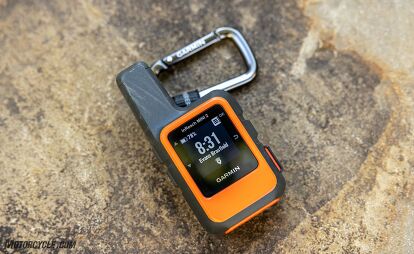











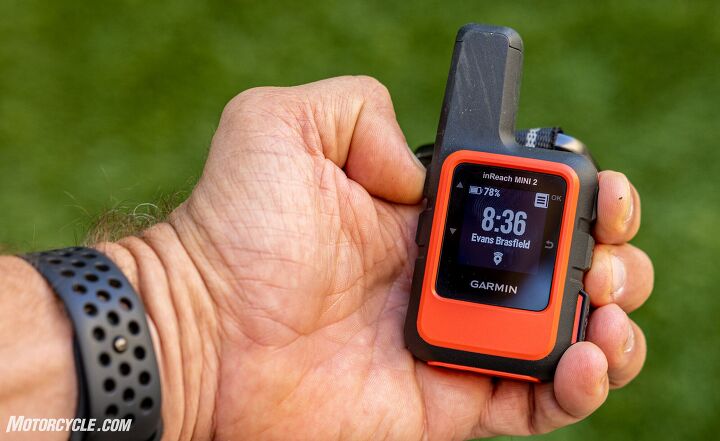
















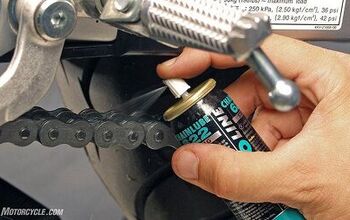
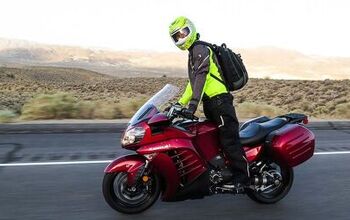
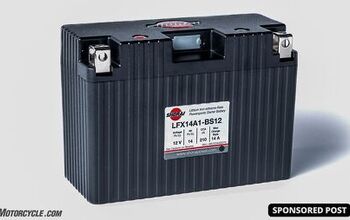

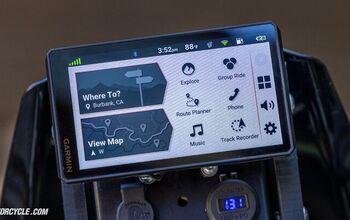













Comments
Join the conversation
Evans, thank you for a very thorough and helpful review of a product I've been considering for a couple of years now, for all the reasons you note. Then, a few minutes ago, I read the NYT's recap of Apple's annual new product launch, which included the following note on the new iPhone 14:
"Both models add the abilities of a satellite phone, allowing users to connect with emergency services in rural and other remote environments so they can get help if they are lost while hiking or find themselves in some other dire situation."
hmmm
Apple just announced a similar SOS Satellite emergency function in the iPhone 14.